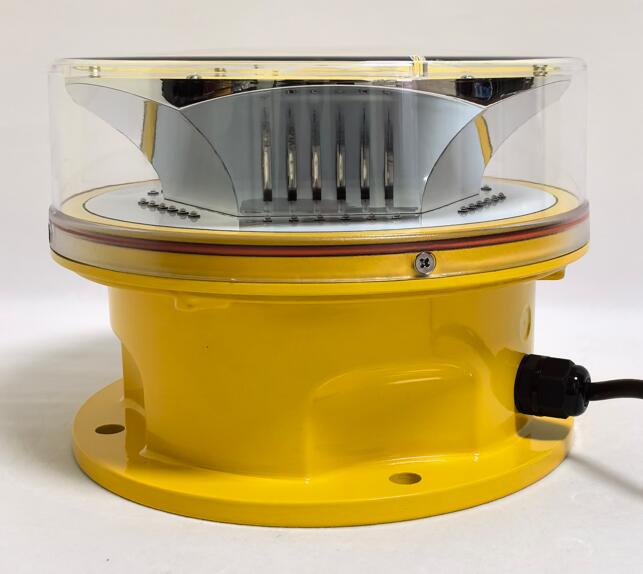FAA Red Obstruction Lights: Safeguarding the National Airspace Through Regulated Visibility
In the meticulously structured hierarchy of aviation safety systems, FAA red obstruction lights represent a critical layer of protection that prevents collisions between aircraft and ground-based structures. These specialized lighting devices form part of a comprehensive visual warning system that alerts pilots to potential hazards while maintaining the integrity of the national airspace system. The technical specifications and implementation requirements for these lights reflect decades of research into human factors, atmospheric physics, and aviation safety management.
The Federal Aviation Administration categorizes obstruction lighting into multiple tiers based on structure height and location relative to airport environments. FAA red obstruction lights typically serve structures between 200 and 500 feet above ground level, providing medium-intensity warning signals that remain effective under various weather conditions. The precise photometric requirements for these lights include specific chromaticity coordinates within the red spectrum, ensuring consistent color recognition by pilots across different manufacturers and installations. This standardization creates a universal visual language that transcends regional boundaries and aircraft types.
Technical specifications for FAA red obstruction lights encompass far more than mere color requirements. The administration's regulations dictate flash characteristics including pulse duration, flash rate, and intensity distribution patterns. These parameters ensure that the lights provide adequate warning without creating confusion with other aviation lighting systems. The typical configuration involves synchronized flashing that creates distinctive patterns allowing pilots to identify multiple structures within complex terrain or urban environments. This synchronization requires precision timing systems that maintain operation within millisecond tolerances despite environmental challenges.

Installation requirements for FAA red obstruction lights demonstrate equal rigor to their performance specifications. Mounting positions must provide unobstructed visibility from all approach angles while maintaining specific vertical and horizontal spacing between units. The regulations specify minimum number of lights per face based on structure width and height, ensuring that the obstruction's outline remains clearly defined regardless of observation angle. Engineering surveys must verify that each installation meets these requirements before commissioning, with periodic re-evaluations following structural modifications or additions.
| faa red obstruction lights |
The evolution of FAA red obstruction light technology has progressed from incandescent systems with colored filters to solid-state LED arrays offering superior reliability and efficiency. Modern units incorporate precision optics that shape light distribution to maximize visibility while minimizing energy consumption. These systems typically include automatic daylight sensors that adjust intensity based on ambient conditions, maintaining effectiveness during twilight hours while preventing excessive brightness that could cause glare issues for nearby residents. The transition to LED technology has significantly reduced maintenance requirements while improving performance consistency across temperature extremes.
Monitoring and control systems for FAA red obstruction lights have become increasingly sophisticated. Modern installations typically incorporate remote monitoring capabilities that alert maintenance personnel to lamp failures, power interruptions, or system malfunctions. These systems often include backup power capabilities through battery systems or generators that ensure continuous operation during utility outages. The monitoring systems document performance metrics and maintenance history, providing valuable data for safety management systems and regulatory compliance documentation.
The human factors research underlying FAA red obstruction light specifications represents decades of study into pilot visual perception and recognition. The red spectrum was selected for its effectiveness in penetrating atmospheric haze while maintaining distinct separation from other aviation lighting colors. Research into flash patterns has determined optimal characteristics that attract attention without creating distraction or confusion with navigation lights. These studies continue to inform updates to technical standards as aircraft technology and operational environments evolve.
Environmental considerations have influenced recent developments in FAA red obstruction light technology. Shielding designs have been refined to minimize light pollution affecting astronomical observations and wildlife patterns while maintaining aviation safety requirements. The reduced power consumption of modern LED systems contributes to lower carbon footprints compared to traditional lighting technologies. These environmental improvements have facilitated installations in sensitive ecological areas where previous technologies might have been problematic.
The certification process for FAA red obstruction lights involves rigorous testing that simulates years of operation under extreme conditions. Manufacturers must demonstrate compliance with technical standards through independent laboratory testing covering photometric performance, environmental durability, and electrical safety. The administration maintains detailed qualification procedures that ensure only compliant products enter the aviation safety system, with ongoing surveillance of manufacturing processes to maintain quality standards.
Future developments in FAA red obstruction light technology focus on enhanced integration with other safety systems. Research continues into systems that could automatically adjust flash characteristics based on real-time visibility conditions or air traffic density. The potential integration with unmanned traffic management systems presents opportunities for dynamic lighting control that responds to specific operational needs. These advancements will further enhance the effectiveness of obstruction lighting while maintaining the rigorous safety standards that characterize the FAA's approach to aviation safety.
FAA red obstruction lights represent a sophisticated safety system that balances technical precision with practical operational requirements. Through continuous refinement of standards and technology, these lighting systems have evolved into highly reliable components of the national airspace protection infrastructure. The ongoing development of FAA red obstruction light technology demonstrates the aviation community's commitment to maintaining the highest levels of safety while adapting to changing operational environments and technological capabilities.
